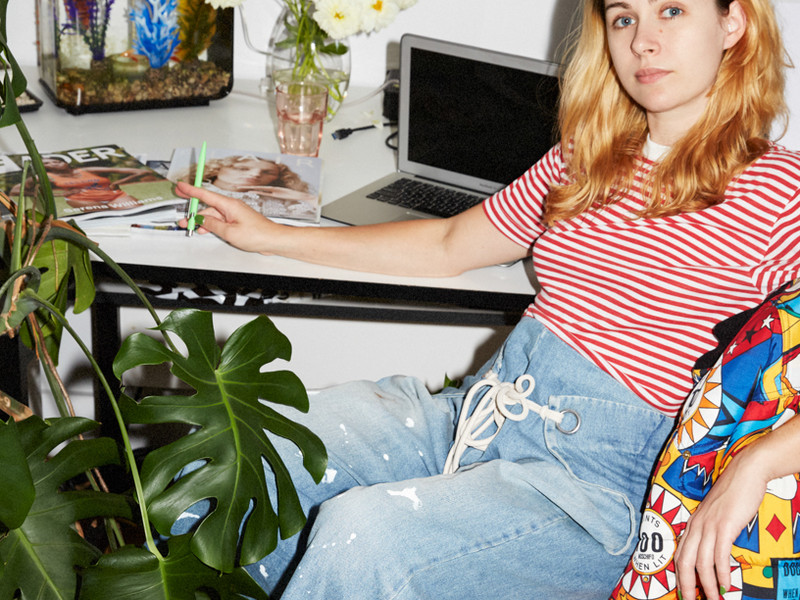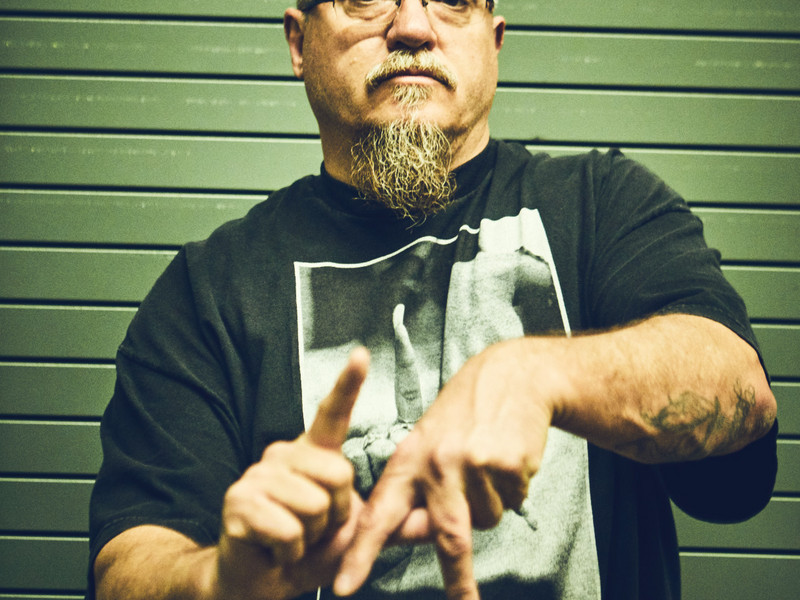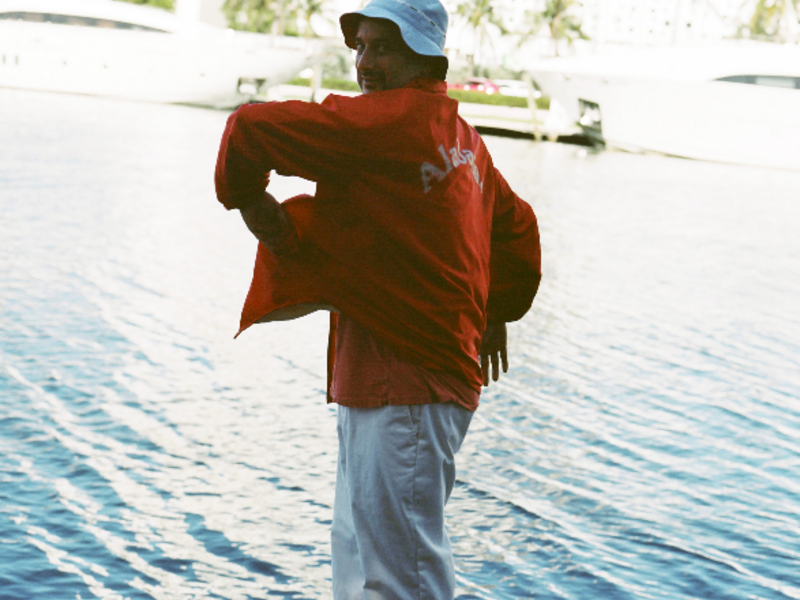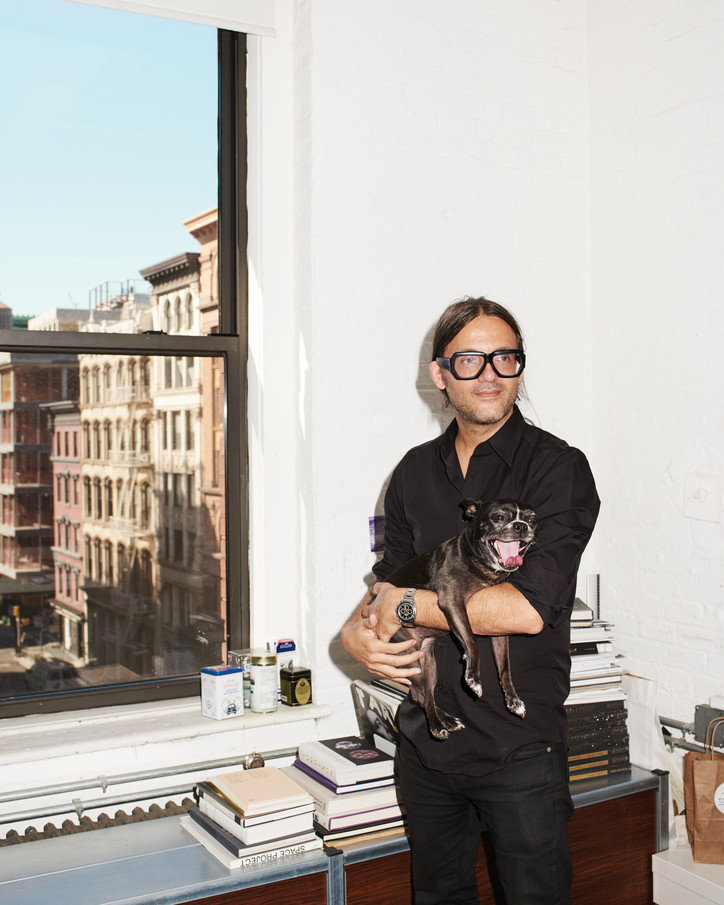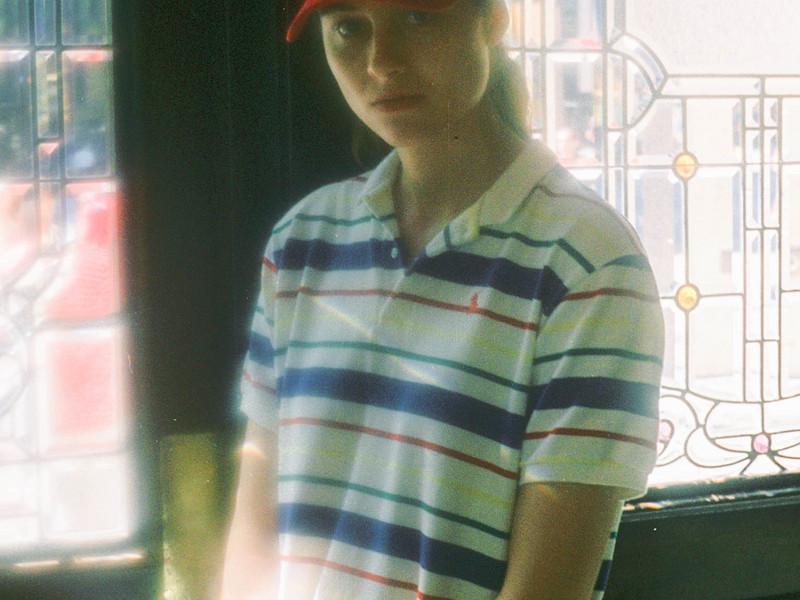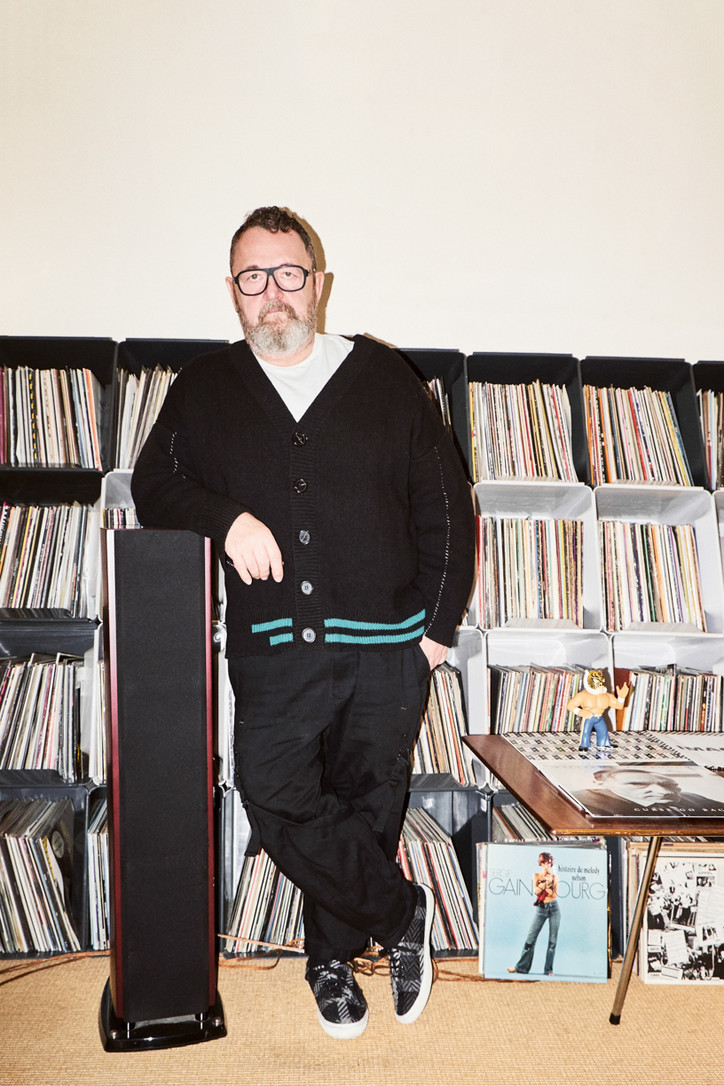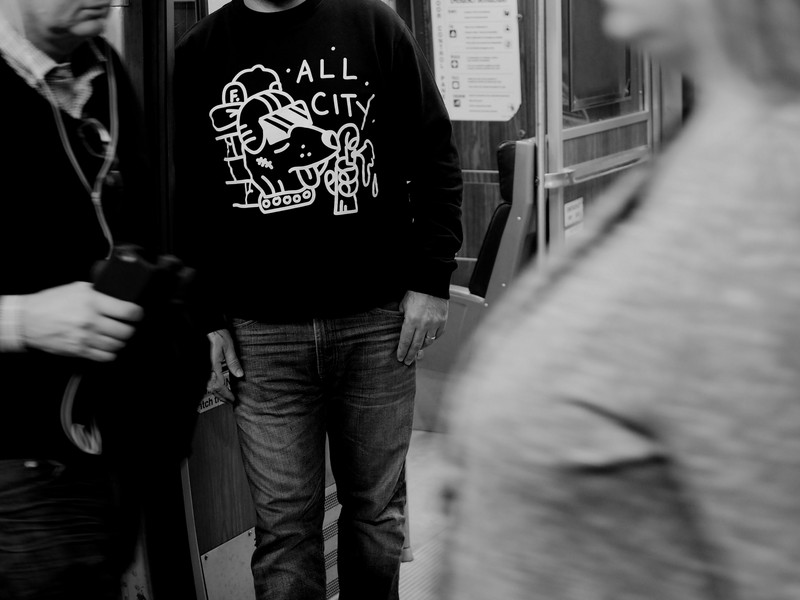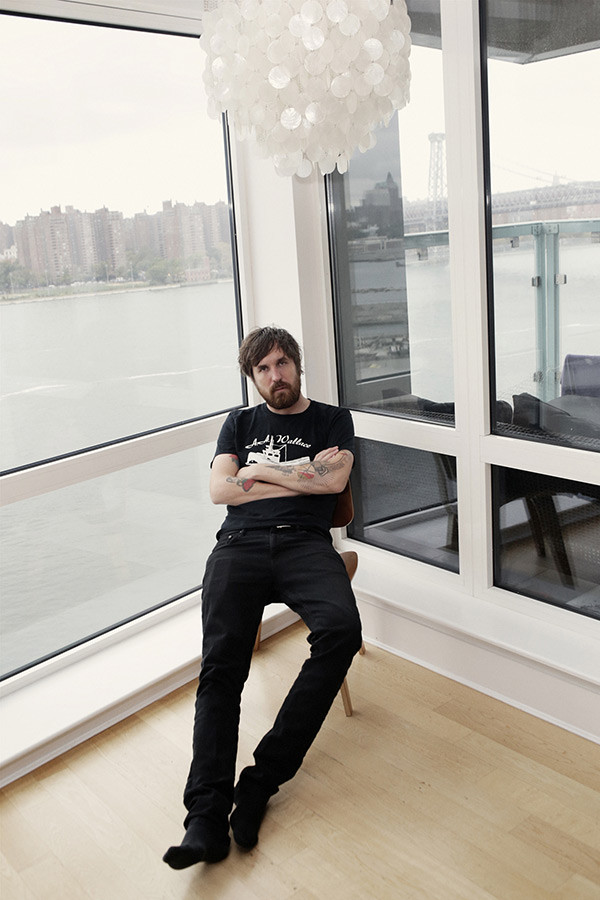Ode To Decades Past

By combining music, readings from prominent artists of the time, as well as a slideshow of images that capture the culture, Goldsmith’s presentation ushered the past into the present like a necromancer. And supernatural it was. Afterwards, Goldsmith invited guests to peruse the outside exhibit, a collection of RAMMELLZEE's life work, while slipping his shoes back on. After shaking the hands of his colleagues and admirers, office got a chance to talk to MoMA Poet Laureate and UbuWeb founder Kenneth Goldsmith who seemed to be in high demand for a comment.
Downtown '81 paints a picture of the downtown New York scene. Can you describe this scene for our readers?
Kenneth Goldsmith Although I was there, I really wasn’t there. I had come to NYC from Long Island to attend NYU in the fall of 1979. By that time, downtown had already been declared dead. I remember going to CBGB in 1979 and it was so dead—all the real action had finished there years before. By 1979, CBGB was a tourist trap. So much of it is myth. Was it great? Sure. But so is today. I think that the time that you’re living in New York City is the always the best time—except for just before you got there.
Was the emergence of this scene a social response to any particular phenomenon? Or just the natural evolution of a city?
KG I was there when the East Village took off and it was like the kids took over the playground. There was a gallery called Fun Gallery, for instance, that emphasized that it was going to be the opposite of Soho, which by then was established and touristy. Fun Gallery showed graffiti artists and lots of cartoony art. It was a lot of fun. Sadly, the fun didn’t last too long. Within a few years, a consumerist brand of conceptualism (a la Koons) had made headway into the East Village and seemingly overnight, thousands of figurative and expressionistic artists were out of fashion. Soho took over again and the East Village art scene died.
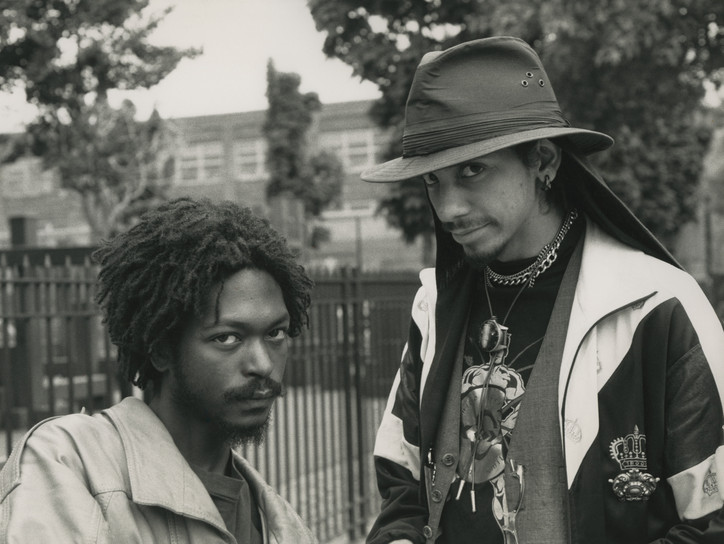
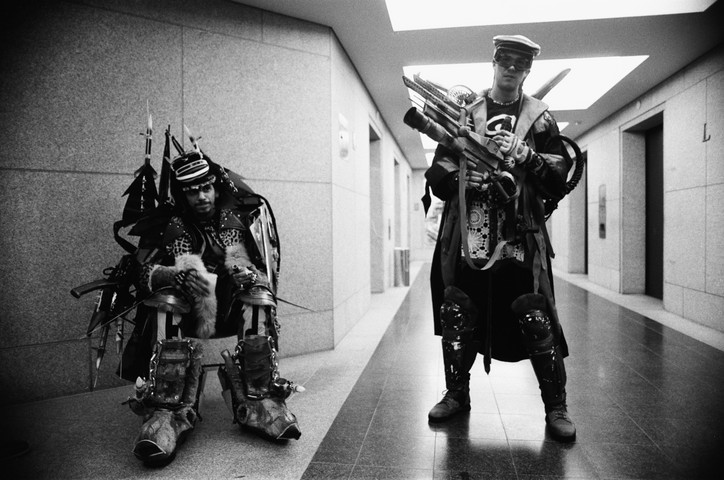
Did you know Rammellzee at all?
KG I must’ve run into him at parties or openings over the years, but I don’t recall meeting him. The name, unfortunately, was tossed into the huge movement of graffiti art, which was big for a year or two, and then kicked to the curb. This is the problem with isms—they eradicate individual practices. Now we see that Rammellzee was a visionary, a folk artist or outsider closer to, say, Reverend Howard Finster that to graffiti art; or you now feel the affinities with Sun Ra, which was impossible to see back then. The show is an eye opener and the best kind of revisionism or reevaluation of an important artist imaginable. Don’t miss it.
In what ways did his work embody New York, and in what ways have you seen it live on?
KG New York art today is more generous, more open, less hierarchical. It used to feel like there was only one way to be at a time and now it’s a vast horizontal practice, where things as disparate as conceptualism sit alongside figuration which hang next to graffiti, and they all seem to be in dialogue. Rammellzee was a visionary—he did everything—music, art, video, sculpture, etc.—and wore that proudly. That’s the way the future turned out, just as he predicted.
In regards to the concept of retrospection and honoring artists like these after death, do you see any aspect of insidiousness in that? Like passing people over in life.
KG I think it happens to artists constantly. Very few artists are rewarded in their life time and the minute they die everybody wants a piece of them. And you see it again ad again and I think it’s a shame. We should celebrate the living among us and not wait for someone to die to celebrate them.
How do you do that?
KG By being open. It’s hard to recognize history in the time you’re living. But our times are historical and they will be looked back at as such. So you have to stop being cynical and stop doubting people’s motives and you have to trust and you have to love and you have to open yourself up to the beauty that is around you in your own time. It’s hard to acknowledge that you are living in history. And it’s hard to acknowledge that your life may not be historical and others living walking this earth with you may. We all want to be historical. But we have to drop our ego and embrace the love that’s around us because life is really short.
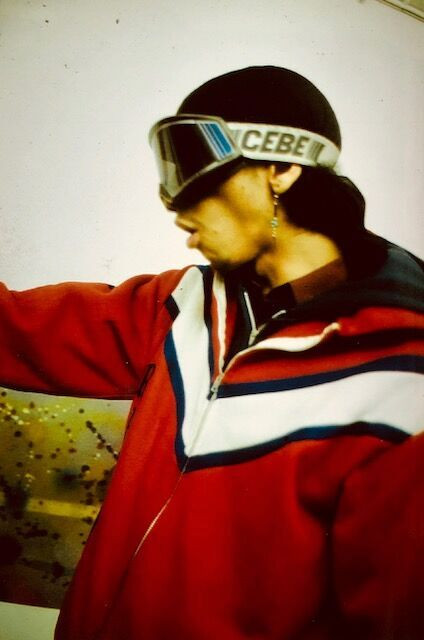
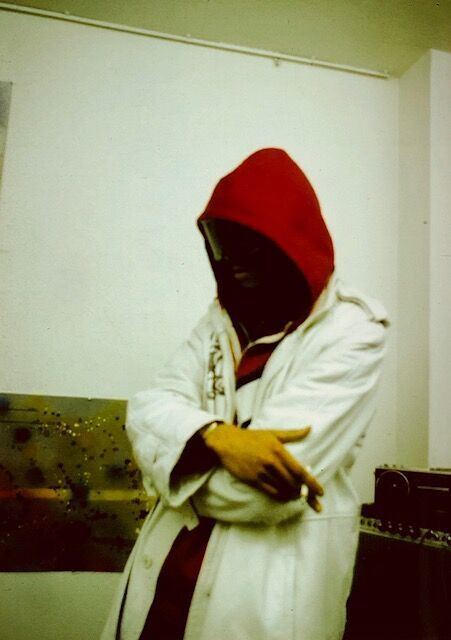
It felt like in the time these artists were creating that there was a sense of urgency. Do you think that is still true?
KG I don’t think the creative impulse ever goes away. It’s as urgent for the young generation to be creating. Things gets historicized but I think people who are working on the web are doing historical work, as historical as this is. The unfortunate part is that the market usually decides what is valuable and what is not. And with so many artists working with ephemeral media on the web without a market, which I think is thrilling, I’m worried that if there’s no market validation how is history going to sift through geniuses among us?
I was just talking to someone about that. There is so much content out there, young artists are having to redefine what sets us apart.
KG They said the art world used to be really small but like I can tell you that 30, 35 years ago it was giant. And you were pushing to make yourself known, and it was an uphill battle, and it was impossible to get a show and it was impossible to get anyone in your studio and it was impossible to sell anything and “how am I going to do this.” And every kid coming out of art school in their 20’s faces the same exact situation as I did in 1984 when I got out of arts school. The same. No different.
Maybe this didn’t translate but what I meant by urgency, was like the urgency to respond to the social condition of the 70’s. I mean from the 60’s to the 70’s was such a huge jump.
KG Were living in giant jumping times right now.
You feel that sense of urgency?
KG Well I don’t cause I’m old but I look around me and I see young artists social justice activists artist feeling a tremendous sense of urgency and that’s history. That’s inspiring.
- Interview by Lee Phillips
- Photos by Peter Gramberg, Vincent Vlasberry and Brian Williams
- NO GUTS, NO GALAXY, Artist curated presentations will take place every Thursday of June at Red Bull Arts New York.
